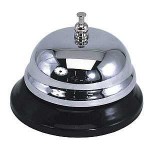 I love ballads, and I’ll bet you do too.
I love ballads, and I’ll bet you do too.
A beautiful melody, gorgeous harmonies, poignant lyrics, delivered at a slow and soulful tempo. Every musical I’ve ever written, and nearly every musical I can think of, has a “big ballad,” and many of those big ballads have become so familiar to listeners and performers that they’re referred to as “standards,” songs that every musician worth his or her salt is expected to be familiar with.
But singer, beware! Ballads are tricky, and the most common mistake I see singing actors make is succumbing to The Ballad Trap.
When you let the mood take over, when the loveliness of the song and the atmosphere of the music cause you to become inattentive to the phrase-by-phrase content of the song, you’ve fallen into The Ballad Trap.
It happens all the time. Ballads seem to lure the singer into a vague wash of behavior, like the mythical Sirens who lured unwary sailors with their songs; before you know it, your performance has been shipwrecked on the rocky coast of generalization.
Let’s consider an example:
So, this song was written for Bernadette Peters by Jerry Herman, and she sang it in the premiere of Mack and Mabel, which presumably means that this is as good as it gets, right? Authoritative, state-of-the-art song interpretation, direct from the star who ought to know best, right? And listen to that adulatory applause!
I’m going to speak heresy now – I don’t think this is a successful performance.
I don’t think Bernadette’s choices communicate the dramatic event of this song phrase by phrase. Do you?
I don’t see choices, but rather a single choice, a somber melancholy attitude. And I don’t see changes – well, sure, she walks down the stairs at one point, but that’s blocking, and pretty unmotivated, if you ask me. I don’t see those changes that occur at the onset of a new phrase or thought, those flickers in the eyes and face that suggest the presence of an active thought process going on during the delivery of this lyric.
Don’t get me wrong, I have the utmost love and respect for Miss Peters. In the 1980’s, she rocked my world as Dot in Sunday and the Witch in Into The Woods. She’s an iconic figure in our field.
I just think she falls into The Ballad Trap in this performance, and the experience that she delivers to the audience (spectators and listeners, taking her in with both eye and ear) is not as rich and specific as it could be if she’d just snap out of that trance.
Here’s another clip of the same singer, a different performance of the same song.
What’s different? Yes, the arrangement, and yes, the tempo. But also the behavior, yes? Do you see the flashes, the little adjustments? The evidence of a thought process?
So that first clip came from a 1987 Tony Awards tribute to Robert Preston, and the second one was recorded 14 years later, at a 2001 tribute to Jerry Herman. And the second clip shows a performance that’s closer to my ideal – even if there is a damn microphone blocking my view of her mouth, and only one lousy camera angle for the entire song.
In her face and voice, I see evidence of moment-to-moment life. The struggles of an individual alive in the present moment, trying to make sense of her feelings and what she’s been through over the past months, desperately seeking of some magic that will “make the moments fly” and transport her out of the “hell … [she’s] going through.”
There are plenty of reasons why even an experienced actress like Bernadette Peters might fall into The Ballad Trap. Perhaps she was feeling tense, or stressed, or tired. Perhaps the presence of the cameras exerted a constraining influence. Perhaps she felt that, since this was a concert and not a performance of a dramatic story, it might make not make sense to include behavioral choices that focus on the drama.
Whatever. It happens to the best of us. The good news is, it’s really simple to fix.
So here’s my antidote to The Ballad Trap. It’s really simple, and maybe you even see it coming.
You gotta Ding It before you Sing It.
 Every song has “dings” – that is, moments when a new phrase or thought begins. The “ding” is a moment of change in the thought process of a song, and ballads have them, same as every other song.
Every song has “dings” – that is, moments when a new phrase or thought begins. The “ding” is a moment of change in the thought process of a song, and ballads have them, same as every other song.
DING!
Time heals everything.
DING!
Tuesday…
DING!
Thursday…
DING!
Time heals everything.
DING!
April…
DING!
August…
Let me try to explain my interpretation of this song, and shed some light on the logic behind these “dings.”
First, it’s important to have a grasp of the given circumstances of the song. Even without access to the libretto for Mack and Mabel, the drama of this song is fairly self-evident: a woman sings about how, despite the passage of time, she has not been able to banish her feelings of loss and sadness resulting from the end of a love affair. Although it is not made explicit for much of the song, the final line (“except for loving you”) brings the identity of the person to whom she is singing vividly into focus: the person to whom the second-person pronoun refers, the “you” of this song, is her former lover, the person for whom she still “carries a torch,” as they used to say.
During the “first heartbeat,” the moments when the musical introduction plays but the singing has yet to begin, the singer is affected by these imaginary circumstances: the presence of her former beloved is causing her some turmoil. This is evident in Bernadette’s behavior in the second video example; we can see her thoughts are in turmoil, setting the stage for the first “ding,” the moment when she makes a transition from troubled silence to song.
What motivates that first line of singing? I find it often useful to imagine an imaginary cue, a question or statement made by the imaginary partner that prompts the first line of the song as a response. In this case, I find it useful to imagine he has asked her a question – “How are you?” or “How have you been?” An innocent enough question, to be sure, but one that has profound implications given the imaginary circumstances.
Hoping to make him think that she’s okay, she offers a familiar cliche, “Time heals everything,” with the implied subtext, “That’s what they say, isn’t it?”
The next moment is of crucial importance in sidestepping The Ballad Trap and acting the lyric with specificity. The next word, “Tuesday,” is a new beat, the beginning of a new phrase. She has moved from the general – “Time heals everything” – to a specific example, a day of the week, as if to say, “That’s what I said to reassure myself back on Tuesday.” The next work, Thursday, suggests she is recalling the days the passed without relief from her anguish: “On Thursday, I was surprised and disappointed that I was still upset.”
Now she re-states the title of the song, the phrase she has clung to in her long process of grieving: “Time heals everything,” thinking “Well, surely, that must be so!” As before, she returns to a more fine-grained level of detail: “April,” meaning “I remember how upset I was back in the month of April,” followed by “August,” an occasion to reflect on how neither days nor months have managed to ease her suffering.
The next phrase, which beings “If I’m patient….,” bears out this interpretation. She is telling her partner how she has tried to remain patient over the past months of anguish, confident in the expectation that the passage of time will eventually diminish her pain.
I won’t analyze the remaining phrases, but I encourage you to imagine how you might do that. Here is the lyric:
If I’m patient, the break will mend
And one fine morning, the hurt will end.
So let the moments fly,
Autumn,
Winter,
I’ll forget you by this year,
Some year.
Though it’s hell that I’m going through,
Some Tuesday, Thursday,
April, August,
Autumn, Winter,
Next year, Some year…
Time heals everything!
Time heals everything but loving you.
My point is, it’s a beautiful song, musically and lyrically, and a haunting and effective dramatization of heartbreak, but if it’s played as a wash of mood, you don’t really experience its full impact. I sometimes refer to this approach as “mood sauce;” imagine a dish in which all the ingredients are coated with a thick sauce, one that obscures the texture and flavor of the individual components. Go easy on the mood sauce, that’s my advice, and make changes at the “dings” in the text, the moments when a new thought or phrase begins, if you want to avoid the ballad trap.

Most of the time we should sing in such a way that the hearer can easily tell when you come to a punctuation mark (for example, commas, not just periods and question marks)–they are kind of like a “ding.” Peters’ first rendition seemed like someone on drugs (anti-anxiety agent, maybe), not someone who’s feeling conflicting emotions. It seemed like she just wanted to display a pretty voice. Another hint–make sure you’re accenting the correct words. Don’t be tricked into accenting just because of where the word is in the phrase or how nice it sounds (like when it has a higher note than the other words in the phrase). Peter’s did this on the word “I’m,” but sang the key word, “patient,” as if it was just a filler word. I wrote that before reading your analysis of that phrase, Charlie.
Looking at the punctuation marks in the text of the song is one of the most useful ways to discover the “dings,” Harold. I appreciate how thoughtfully you’ve engaged with the material I shared!